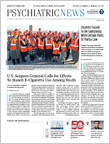Between 2000 and 2012, the prevalence of dementia among U.S. adults 65 and older dropped from 11.6 percent to 8.8 percent, according to a report published November 21, 2016, in JAMA Internal Medicine.
This study, which was led by Kenneth Langa, M.D., Ph.D., a professor of internal medicine, gerontology, and health management and policy at the University of Michigan, is not the first to suggest this encouraging trend for a serious public health issue. However, it is the first study to provide evidence of decreased dementia rates in a large and nationally representative population.
Langa and his colleagues analyzed data from the Health and Retirement Study (HRS), which surveys adults 65 years or older on physical health, cognition, family, employment, and wealth every two years. The authors used a 27-point cognitive scale to compare about 10,000 people from both the 2000 and 2012 waves of the survey. Respondents who scored from 0 to 6 on the 27-point scale were classified as having dementia, 7 to 11 as having normal cognitive impairment-no dementia (CIND), and 12 to 27 as normal.
In addition to dementia rates falling from 2000 to 2012, the authors found other signs of improvements in the cognitive health of seniors. CIND dropped from a prevalence of 21.2 percent in 2000 to 18.8 percent in 2012, and the percentage of seniors in nursing homes dropped from 4.4 percent to 2.8 percent.
The abundance of survey data enabled the researchers to observe that the decline in dementia rates came even as the prevalence of multiple cardiovascular risk factors thought to contribute to dementia—obesity, diabetes, and hypertension—rose.
Langa noted that the treatment of these cardiovascular risks has improved over the years as well. For example, while hypertension may be more prevalent, the risk of stroke—which can induce and/or worsen cognitive impairment—has not gone up, due to better hypertension management.
Sudha Seshadri, M.D., a professor of neurology at Boston University School of Medicine, told
Psychiatric News that she is encouraged by the results of the
JAMA Internal Medicine study, as they corroborate existing evidence indicating a fall in dementia rates. In February 2016, Seshadri and colleagues reported findings that also suggested that dementia rates in older adults have been slowly declining since the 1970s (
Psychiatric News, April 1, 2016). The results, based on an analysis of 5,000 adults who were enrolled in the long-running Framingham Heart Study, appeared in the
New England Journal of Medicine.
Back when her study was published, Seshadri had cautioned that her results were limited to a homogenous group of people living in a single U.S. city.
“It is good to see this trend validated in the national population, but we should not assume that dementia is less of a problem because of this decline,” she said.
For one, while the overall rate may be going down slightly, the increase in the U.S. senior population means that absolute cases of dementia are still rising. Given the upcoming surge of seniors as the baby boomers continue to reach retirement age, this absolute rise in prevalence would still be a tremendous public health concern, she said.
A second concern is that there is no guarantee that observed trends will continue, Seshadri said. Over the next decade, the dementia rate may flatten or even begin rising. Therefore, she noted that it is important to try and understand what’s driving the decline in prevalence.
As with Langa’s study, Seshadri’s analysis of Framingham participants suggested that improved management of cardiovascular health seemed to be contributing to the decrease in dementia prevalence.
Another possible protective factor is education. Langa and colleagues identified a strong correlation between increased years of formal education (high school, college, etc.) and lower dementia risk. In the study, Langa and colleagues wrote that this association supports the idea that continuing education stimulates the brain and builds up a “cognitive reserve” that might help prevent dementia onset.
“The question is, are the benefits from education per se or everything that comes along with that education?” asked Seshadri. She pointed out that people with higher education also tend to have more money, better nutritional habits, fewer occupational hazards, and other socioeconomic benefits.
Untangling which of these elements linked with higher educational attainment slow cognitive decline will be critical, she said.
This study was supported by multiple grants from the National Institute on Aging. ■
An abstract of “A Comparison of the Prevalence of Dementia in the United States in 2000 and 2012” can be accessed
here.
